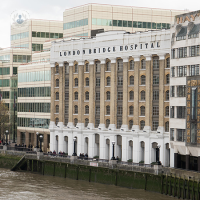Myeloproliferative disorders
Dr Michael Potter - Haematology
Created on: 03-12-2013
Updated on: 09-28-2023
Edited by: Conor Dunworth
What are myeloproliferative disorders?
Myeloproliferative neoplasms or disorders are a group of rare diseases that affect the production of blood cells in the bone marrow. Depending on the type of myeloproliferative disorder, it may cause the overproduction of red blood cells (RBCs, which carry oxygen), platelets (which help in the coagulation of blood), and leukocytes (white blood cells, which fight diseases).
They are diseases that can appear at any age. The symptoms and the progression of the disease will depend on the age of the patient, the type of myeloproliferative disorder he suffers and his state of health.

There is some debate about whether these conditions should be regarded as cancerous or not. They are related to, and may evolve into myelodysplastic syndrome and acute myeloid leukaemia (AML).
The types of myeloproliferative disorders are:
- Chronic idiopathic myelofibrosis (MFIC) – myelofibrosis refers to scar tissue forming in the bone marrow. This scar tissue fails to produce enough healthy blood cells, which can lead to anaemia. The cells it does make do not mature normally and have an irregular shape. It can evolve into AML.
- Polycythaemia vera (PV) – caused by excessive production of RBCs in the bone marrow, leading to thicker blood and often a swollen spleen. The patient may feel this swelling on their left side. Itching and redness are common symptoms. It can lead to myelofibrosis and/or AML.
- Essential thrombocythaemia (ET) – the number of platelets in the blood is higher than normal. This increases the risk of blood clots, which can be very dangerous. Conversely, if the platelets don’t form properly, they may not work, which can lead to problems with excessive bleeding.
- Chronic myeloid leukaemia – this blood cancer affects the production of certain types of disease-fighting white blood cells.
- Chronic eosinophilic leukaemia / hypereosinophilic syndrome (SHE) – a rare type of leukaemia that affects the number of a type of white blood cell called eosinophils.
- Chronic neutrophilic leukaemia – a rare type of leukaemia affecting a type of white blood cells called neutrophils.
- Systemic mastocytosis (MS) – this rare disorder affects mast cells, which act as an alarm system that signals blood cells that fight diseases in target areas of the body. They are normally found in the skin, the connective tissue and the lining of the stomach and intestines. When there is a mastocytosis, too many mast cells accumulate in body tissues, which can affect the spleen, bone marrow, liver or small intestine.
What are the symptoms of myeloproliferative disorders?
Normally, the symptoms are typical of blood diseases, including:
- Headache
- Tiredness
- Difficulty breathing
- Easy bruising or bleeding
- Small red spots under the skin
- Unexplained weight loss
- Night sweats
- Fever
There are variants of myeloproliferative disorders that show no symptoms, especially in the early stages.
Causes of myeloproliferative disorders
The exact causes of myeloproliferative disorders are not known.
What is the treatment for myeloproliferative disorders?
There is currently no curative treatment for any of the myeloproliferative disorders, so treatment is usually based on controlling the symptoms of the disease. Depending on the type of myeloproliferative disorder, the patient, and their symptoms, the doctor may discuss the following treatment options with the patient:
- Medication
- Targeted cancer drugs (particularly for chronic myeloid leukaemia)
- Chemotherapy
- Radiotherapy
- Stem cell/bone marrow transplant
- Venesection (removing blood) – this simple procedure may have to be repeated regularly.
- Blood transfusions (for myelofibrosis)








